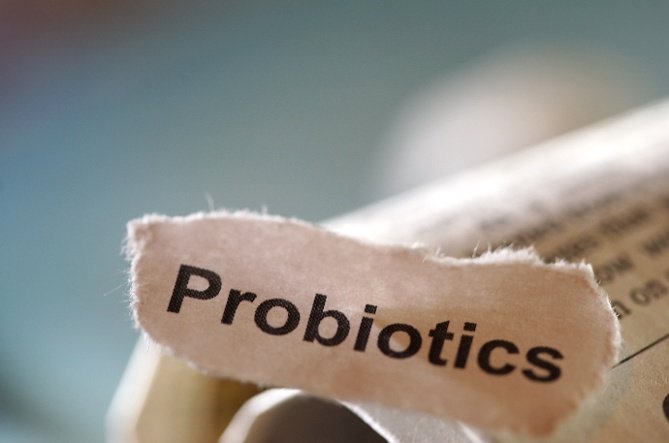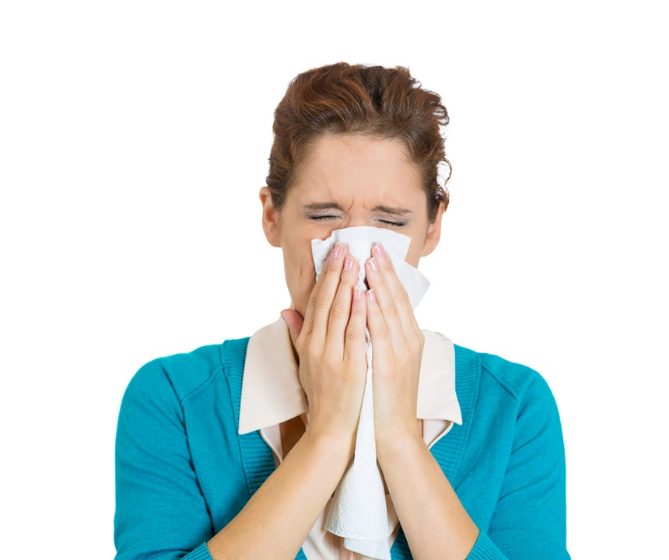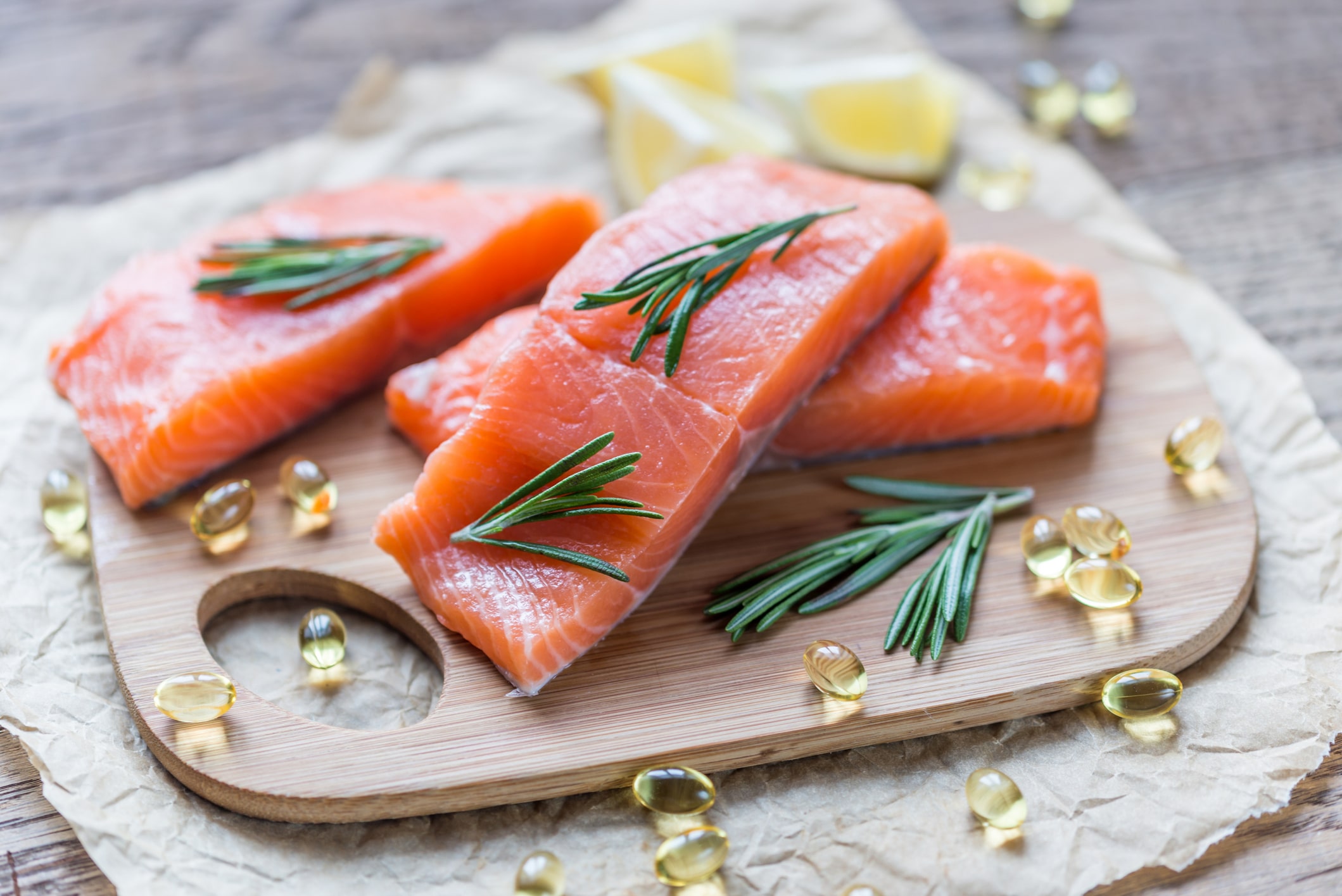Discover eight strategies for natural immune and anti-histamine support. One is sure to be new for your seasonal toolbox.
Allergies can come at all times of the year, but the most pronounced is the spring pollen season.
Here are a number of natural strategies to curb your allergy burden & stifle your seasonal sniffles without turning to OTC or prescription allergy medications.
1.) Support Vitamin D Levels
Vitamin D is not truly a vitamin – it is a powerful hormone. It is naturally anti-inflammatory & acts as a referee for your immune system.
If low in vitamin D, your immune system is prone to imbalances – especially those triggered by allergens. Promote healthy vitamin D levels by getting 30 minutes of sunlight a day during peak UV hours of generally 10:30am-3:00pm, but you can use an app like D-minder to tell you exactly when the ideal times are.
If due to weather, clouds, or work demands, many of us still do not get enough vitamin D. Supplementing with 2000-5000 IU per day of Vitamin D can help support or maintain normal levels of vitamin D.
Any time I mention vitamin D, I like to remind about the benefits of vitamin K2 supplementation. Vitamin D boosts the absorption of calcium – but as vitamin D storage levels surpass 40ng/mL, it is increasingly important to ensure adequate vitamin K2 levels.
Vitamin K2 tells the calcium where to go after it is absorbed – otherwise calcium ends up where you do not want it to – like the arteries!
My favorite approach is to take vitamins A, D, and K together to support needs synergistically. I use Vitamin ADK Complete.
2.) Eat Foods with Anti-Histamine & Anti-Inflammatory Properties – High in Quercetin and Vitamin C.
Foods rich in quercetin and vitamin C may include onions (especially raw red onions), parsley, berries, kiwi, broccoli, leafy greens, and pineapple. Pineapple is rich in the anti-inflammatory enzyme bromelain that can help reduce inflammation in the sinuses. Bromelain and quercetin work independently and synergistically to support sinus and immune health.
Peppers can be great sources of vitamin C and quercetin – but may not be right for those following autoimmune protocols.
Richly colored vegetables and fruits tend to support histamine balance. Green tea has also been studied extensively for its immune-supportive benefits. Many fruits and vegetables are high in vitamin C which has natural anti-histamine properties.
Vitamin C not only helps to reduce the release of histamine, but also helps to detoxify histamine out of the system. I love the anti-inflammatory potential of Daily Phyto Balance, which contains some of the most researched extracts in the industry: quercetin, curcumin, resveratrol, lycopene, sulforaphane (from brocolli), EGCG from green tea, and a potent pomegranate extract.
3.) Consider a Low-Histamine Diet
Certain foods trigger a histamine release or liberation in the intestines – and can lead to systemic histamine-related symptoms if not broken down appropriately.
While not everyone is histamine intolerant, genetics and gut dysbiosis can play roles in why someone responds well to a low-histamine diet or not. If you’ve been prone to allergies, hives, or chronic sinusitis, it’s an approach to consider.
Foods high in histamine or considered “histamine-releasing” include fermented foods and vinegars, as well as aged & processed meats, beer, wine, and liquor. Citrus fruits are also known histamine releasers.
Symptoms can include headache, skin irritation, anxiety, hives, breathing difficulty, diarrhea, and more.
The tricky thing with low-histamine diet is that it excludes kimchi, sauerkraut, kombucha, and other fermented foods otherwise recognized as healthy for the immune system and gut. Lactobacilli probiotics are able to produce histamine as a byproduct of their normal metabolism – I stay away from Lactobacilli-containing probiotics in the short-term, opting for SporeBoost IG and TrubifidoPRO foremost instead.
4.) Support Immunity with Probiotics, Glutathione, & Fish Oil
 Along with vitamin D, probiotics, glutathione, & fish oil are strong balancers of the immune system.
Along with vitamin D, probiotics, glutathione, & fish oil are strong balancers of the immune system.
I spoke above regarding vitamin D.
Probiotics:
For complete details on probiotics, check out my recent Probiotic Blueprint.
Probiotics work with the body to modulate the immune system. The gut is a major immune organ rich in lymphoid tissue called GALT (gut-associated lymphoid tissue). When this system is off, your immune system becomes increasingly touchy to stress and allergens from food and the environment.
Glutathione:
Glutathione is the body’s master antioxidant. It is involved in detoxification as well.
For glutathione support, I recommend supporting its synthesis and recycling in the body with N-acetyl cysteine (NAC), and alpha-lipoic acid, respectively. When taking directly, I recommend Liposomal Glutathione.
NAC also helps to thin mucus which makes it double supportive for those with active allergies, sinusitis, or rhinitis.
Due to genetic differences, some individuals are naturally susceptible to glutathione deficiency – triggered by stress, environmental chemicals, and metabolic stress.
It’s important to maintain omega 3 levels in the body as well, and most people do not get enough intake. If fish isn’t on the menu for you at least 1-2 times a week, maintaining levels of essential fats in the body is important. I aim for 1-2g of a combined EPA/DHA/DPA supplement taken after fat-containing meals.
Fish oil is anti-inflammatory – its absence promotes inflammation in the body & may make allergy symptoms easier to trigger. Omega 3’s directly support the function of immune cells – a discussion about immunity would be incomplete without them. Algal oil (vegan omega-3) is another alternative.
I generally do not use alpha linolenic acid (ALA) from flaxseed oil because the body is inefficient at converting it to omega 3 fatty acids. Genetically, some individuals do not make the conversion well at all.
I’m not against taking ALA as an omega 3 strategy – yet, I don’t think it’s best as a standalone strategy. My recommendations are not vegan-influenced, and I feel it’s more efficient to go with fish oil sources for a better dose of EPA and DHA.
5.) Avoid Intense Exercise when Symptoms are Active. Evaluate Hidden Triggers!
Intense exercise is stressful on the body. Stress is a natural suppressant of your immune system. When your body is under a threat, it is more concerned with getting away from the danger & less concerned about fighting off illness.
If one suffers from exercise-induced asthma – it’s a sign to me that your immune system balance is off-kilter.
This could be driven by food sensitivities (dairy, wheat, corn, and so forth in the diet), but also just overall immune load (add pollen, mold, air particles, pesticides, pet dander, heavy metals, or other stresses on the body).
Physical stress can be the last straw that sets histamine-related symptoms off – and trigger wheezing, or potentially-serious asthma attacks.
My best example comes from personal experience.
I am sensitive to cats, but my symptoms only flare up if I was exposed to dairy (butter, milk, cheese) in that day. The dairy sets my immune system on alert – and the cat dander sets it off into histamine symptoms that can include tight airways, puffy eyes, easily irritated skin and hives if I come into physical contact with the hair.
The cat wasn’t the problem – it was the dairy!
I think most seasonal allergies come back to similar “stealth triggers” of immune imbalance.
Allergy symptoms are harbingers of deeper triggers to think about – usually food, mold, or heavy metal exposure.
Synthetic perfumes and off-gassing from electronic equipment, carpeting, or flame-retardant treated furniture can also be triggers keeping your immune system on edge.
Dealing with hidden EBV infection, Candida, SIBO, or other circumstances may also be chronic, underlying triggers.
Allergy symptoms are canaries in the coal mine for a deeper investigation as to what’s setting your symptoms off.
For instance, histamine intolerance is most often present due to SIBO. SIBO is often associated with overgrowth of histamine-producing bacteria prevalent in the small intestine.
This brings me to a more direct discussion on histamine intolerance…
6.) Histamine Intolerance due to SIBO or Genetic Vulnerability to Histamine Intolerance
Some individuals are naturally slow at producing histamine-degrading enzymes in the body. Genes include DAO, HMNT, HDC and ABP-1. The more snps (single nucleotide polymorphisms; “slow copies”) you have in these genes, the more likely you will be sensitive to histamine fluctuations.
Most of the time, histamine intolerance is due to bacterial and/or fungal overgrowth in the small intestine. The overgrowth leads to higher levels of histamine in the intestines that overloads our ability to degrade histamine naturally. It essentially brings out any slow ability to process histamine.
Small intestine bacteria tend to be histamine-producing as well – when overgrown, the histamine load is too much for our natural systems to handle. Histamine builds up in the body as a result.
Heavy drinking of alcohol can bring out symptoms, and slow metabolizers of histamine will be more sensitive to alcohol intake. It also can be why one tolerates some alcohol sources better than others.
Red wine is more of a trigger than white wine. Dark liquor is more histamine-producing than clear liquor. All alcohol is high-histamine and may need to be eliminated for a period of time until histamine tolerance increases again (or seasonal triggers subside).
In many cases, your sensitivity to histamine foods will disappear after you take care of the gut imbalance.
Some individuals have Mast Cell Activation Syndrome (MCAS) which is a serious sensitivity to histamine and they have to follow a strict anti-histamine diet and carry an Epi-pen with them at all times. This is a SMALL subset of the norm and most of the time issues can be linked back to the gut.
In the meantime, there are stopgaps you can try.
I am sensitive to histamine foods and beverages. I can handle them to a degree – but then I hit a threshold.
I am genetically slow at degrading histamine, and while I’m not at the level of needing to carry an epi-pen with me at all times, I take a supplemental histamine-degrading enzyme called DAO (diamine oxidase) prior to eating or drinking a high-histamine food or beverage.
DAO is produced in the intestines and mops up histamine released by high-histamine foods. When you take supplemental DAO 10-15 minutes prior to consuming these foods, the capsules have time to release in the small intestine at the same time that the histamine is being released by your food.
The supplemental DAO then breaks down any released histamine. If you have one or more snps in your DAO enzyme or you suspect SIBO is overcoming your ability to deal with intestinal histamine, I recommend taking a DAO supplement.
DAO is broken down by stomach acid, so you need a special capsule to ensure delivery in the small intestine. I use Histamine Block by Seeking Health.
There are a number of histamine receptors in the gut, brain, muscle, vessels, and the rest of the body.
This why symptoms of histamine intolerance differ so much between individuals, and why you might respond to some medications and not others. The diversity of histamine actions in the body is also why anti-histamines are associated with various side effects.
Anti-histamines can be helpful, but also lead to a rebound in histamine release once you’re off the medication – so use them wisely.
Check with your prescribing doctor with questions related to histamine medications and express your interest in natural supports to a clinical nutritionist or functional medicine trained practitioner.
Additionally, if your histamine breakdown is naturally slow due to genetics or high demand, Riboflavin (Vitamin B2) is a co-factor that helps “push” histamine metabolism forward.
7.) Quercetin, Vitamin C and Histamine-balancing Herbs & Extracts like Stinging Nettle:
While my bias is to always look for the source of symptoms, sometimes we need to get through our day-to-day with natural anti-histamine support.
These ingredients are in a number of supplements, you might do well just supplementing with a Buffered Vitamin C.
Anytime you supplement with Vitamin C, divide it over three to four separate doses throughout the day, and be mindful of any changes to your bowel movements (ex. for 2000mg daily vitamin C, it’s best to supplement 500mg 4x/day).
Once you reach an absorption threshold of vitamin C, the rest finds its way to the colon. Because there is now extra solute in the colon, the body balances it out with water. Excess water drawn into the colon triggers loose stools and diarrhea.
How much vitamin C is enough?
The rule of thumb is to supplement in increasing divided doses to the point of triggering diarrhea. Once loose stools are triggered, back down a capsule and maintain until you trigger loose stools again and need to lower the intake further.
Numerically, it’s recommended to take at least 2000mg or more of vitamin C divided over the course of the day. You can increase to as high as 5000mg in divided doses.
If you’re taking other supplements, you may need less to achieve your desired effect.
If you’re taking anti-histamine supplements – be mindful that many include vitamin C. Account for this intake if adding extra vitamin C on top of it with a different supplement.
I use C-1000 Plus by Progressive Labs, but hundreds of vitamin C products are available at most grocery stores and health shops.
I like C-1000 Plus because it also contains bioflavonoids and rutin – rutin is a natural source of quercetin – so you get a nice anti-histamine support combination.
Vitamin C is similar in structure to sugar – and if you find yourself craving sugar – sometimes it’s the body’s way of telling you that you’re deficient in Vitamin C. Vitamin C is used up during chronic stress and if you find yourself craving sugar when stressed – try some vitamin C instead!
If you want expanded support beyond vitamin C and quercetin, look to supplements containing stinging nettle (Urtica dioica).
I like Histamin-X by Seeking Health. It contains stinging nettle, along with vitamin C, quercetin, and other seasonal allergy supports.
My histamine clients tend to be on a combination of N-Acetyl Cysteine, C-1000 Plus, Histamine Block, Histamin-X, and/or Riboflavin.
Remember, while these supports are great for symptom management, my ultimate goal is to restore microbiome diversity and address SIBO & dysbiosis.
8.) Enzymes like Nattokinase, Serratiopeptidase, and Bromelain:
Enzymes are great at thinning mucous and reducing inflammation. They’ve also been clinically studied to help reduce nasal polyps and inflammation specific to the sinus cavities.
Nasal polyps are scar tissue that develops in the nasal passageways due to chronic sinus inflammation. Because of the decreased air space, and the increased surface area for irritation to develop – those with nasal polyps are more prone to chronic sinusitis and inflammation in a vicious cycle.
I use Nattokinase Pro preferentially for support of chronic sinusitis, but will also use Myomend for those who have muscle and joint inflammation. These blends are rich in nattokinase, serratiopeptidase an bromelain and are used widely worldwide for these purposes. NAC is also a mucus thinner that can support sinus health.
Klaire Labs combines bromelain and quercetin in Quercetin-Bromelain Forte – they work together in synergy for anti-inflammatory and allergy-support. If taking blood thinners, please check with your doctor or clinical nutritionist before taking enzyme blends. I also use Daily Phyto Balance which contains quercetin and other extracts to support immune balance.
There are a number of ways to help reduce inflammation and get to the root cause of your allergies. I’ve touched on some of the more popular diet and supplement strategies in my toolbox. Each option could have its own article and discussion so it’s ultimately about seeing what works best for you.
Sources:
https://www.ncbi.nlm.nih.gov/pubmed/21499100
http://www.altmedrev.com/archive/publications/5/5/448.pdf
https://www.ncbi.nlm.nih.gov/pubmed/19140159
https://www.ncbi.nlm.nih.gov/pubmed/17490952
https://www.ncbi.nlm.nih.gov/pubmed/10344773
https://www.ncbi.nlm.nih.gov/pubmed/23600494




